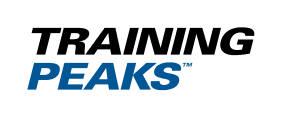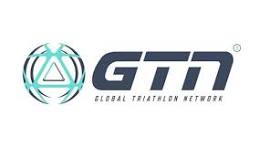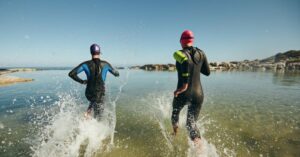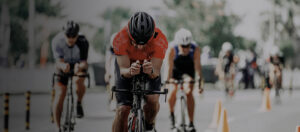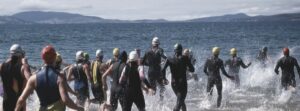Eliud Kipchoge’s recent sub-2 marathon highlighted the importance of running form. Here’s our guide to refining your running gait to boost your chances of a personal record and lower your chances of injury.
One of the abiding memory’s of Eluid Kipchoge’s historic sub-2 hour marathon wasn’t the guided laser, electric car or cutting-edge shoes. Yes, those innovations assisted the Kenyan but, for us, it was something more grounded.
Something that sent Bannister to the sub-4min mile, Fraser-Pryce to world 100m glory and, in triathlon, Alistair Brownlee to double Olympic gold. What are we talking about?
Run technique; in other words, perfect running form.
From start to finish of his 1:59:40 game-changer, Kipchoge’s technique proved flawless, ensuring maximum energy and effort projected his body forward at a staggering 4:34mins per mile. This was no accident.
Kipchoge’s meticulous in his preparations and is a key proponent of practising run technique – something, let’s be honest, few of us do. But if it’s good enough for Kipchoge… you know the rest.
What Is Good Running Form?
Okay, let’s start from the bottom up. And when we say bottom, we mean feet. Contrary to popular opinion, landing on the balls of your feet isn’t the be-all and end-all. Kipchoge’s a great example of that as he’s a mid-foot striker.
Mind you, the aim of landing is to recoil and spring off with optimum speed and efficiency, which naturally derives from the balls of your feet. Heel landing, on the other hand, which applies to many runners and triathletes, is the most inefficient method. Not only does it slow down movement between landing and toe-off, it potentially increases the likelihood of injury.
As for leg position, again it’s individual but, broadly, your shin should be as close to perpendicular as possible when your foot strikes the ground. This is impacted by foot landing. Significant heel strikers forge too great an angle; extreme footstrikers, the angle’s too small. Both scenarios can lead to injury in the opposite limb.
The final part of the lower-limb jigsaw is knee position. Ideally, your knee should align with the middle of your foot so that when your foot strikes the ground, it’s right beneath your knee. Your knee, on uplift, should also be in front of your hips rather than flaring either way.
Then we have the hips. Your torso should be slightly ahead of your hips so you can more proficiently activate your powerful gluteus maximal muscles. You naturally do this when running uphill, which is why cross-country and fell runners often experience very sore bums post-race!
Proprioception is Key
Arguably more important than the minutiae of foot, leg, knee and heel position, however, is improving proprioception. Simply put, proprioceptors are the sensor in your muscles that govern balance. When you’re injured, these proprioceptors don’t function properly, which can lead to further injury and bad technique. We had a long conversation with Olympic triathlon coach Darren Smith about this several years back…
‘Every time we land on the ground, we have 0.15secs in order to land, control and push off in clean alignment, that’s good,’ Smith told us. ‘If you’re not aligned, you leach energy because the foot’s structure is all sloppy. It lands and collapses; your knee buckles in; your hip switches. All of this energy is absorbed into the body like a sponge.’
One method to improve this alignment and proprioception, says Smith, is the cleaning-teeth drill, namely you clean your teeth with your eyes closed and on one leg. ‘You then move onto jumping and landing on one foot. Open your eyes and see how your body stands and lands on one foot. Does it collapse? What do you need to do to hold it together?’ It might sound mildly eccentric but it works: six of Smith’s squad qualified for the 2012 Olympics including women’s silver medallist Lisa Norden.
Off-Road Benefits
You can further improve proprioception with off-road running, which explains why this is such fertile terrain for all levels of runner. This from a conversation we had with off-road legend Ceri Rees, who once worked in Kenya for Olympic legend Kip Keino and has won one of the UK’s toughest marathons, the Kielder Off-Road Marathon, three times.
‘When you run off-road, you’re engaging stabilizing and synergetic muscles, not just the main running muscles,’ Rees told us. ‘Every footfall is different. It makes you more aware of your running stride. You’re also much less likely to endure shin splints.’
‘You’re also more likely to remember what your natural stretch reflex is,’ Rees continues. Your what, you may ask? ‘If you jump lightly and quietly, that’s your natural stretch reflex. Essentially it’s the natural elastic propensity of your muscles to accelerate and decelerate at a certain rhythm. The more sensory feedback your body can retrieve – for instance, from running off-road – the better your body is at recognising and controlling this.’
That includes arm and head position. Again, let’s fall back on Kipchoge for general advice. His head and upper body are so relaxed and still, little energy is wasted. But lower down, there’s a gentle rotation of the core to balance out the rotation of his legs and pelvis. With his upper and lower body working in an opposite rotational pattern, Kipchoge can really engage his core muscles to drive him forward.





